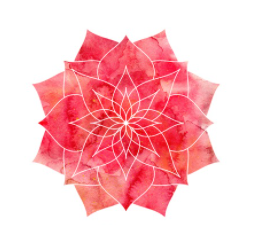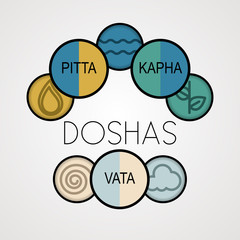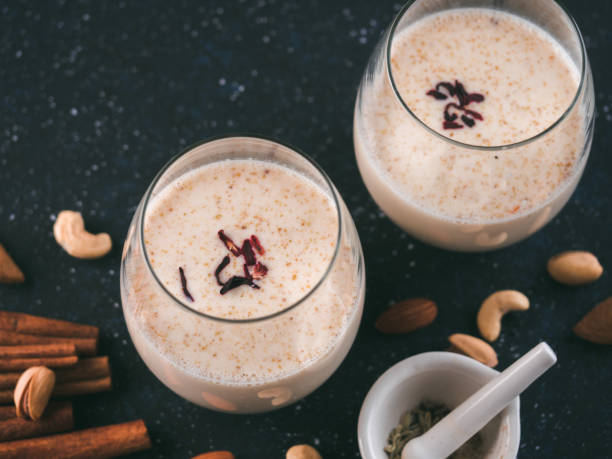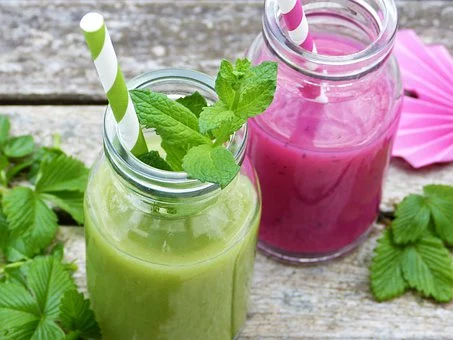Pitta dosha is the fire dominated dosha responsible for all the heat and chemical-based transformations in the body. The word pitta emerges from “tap santape” – the conversion power of penance/heat.

Pitta is second in importance to vata dosha. However, it handles the most vital function of digestion in the body, our digestive system defines our nutritional supply and hence our health.
As vata manages the kinetic energy in the body, pitta is in-charge of the heat energy. All transformational processes like tissue formation, maturation, production of hormones, digestive juices, blood cells; everything comes under pitta dosha.
Pitta Dosha Characteristics
- Slightly oily
- Sharp or penetrating
- Hot
- light
- With distinct odor
- Sara (slithers like a snake)
- Liquid
All these features help pitta dosha to perform its functions. Pitta produces heat. All other features emerge from this heat or the fire element of pitta. Heat is penetrating and creates lightness through burning/elimination.
Fire feeds on fats, and produce odors. It moves like a snake, following the trail of inflammable substances and melts them down to liquidity.
Therefore pitta dosha is a comprehensive fire package for the body.
Abode of Pitta Dosha

- Umbilicus
- Digestive tract
- Sweat
- Serum/Lymph
- Blood
- Chyle (the milky fluid formed after digestion)
- Eyes
- Sense of touch
These abodes or offices help the pitta dosha to perform its functions. The umbilicus is the central point for multiple nervous plexuses(nerve bundles) that control the secretions of digestive juices and intestinal mobility. Probably, for this reason, the umbilicus is the main site of pitta.
Pitta manages heat inside the body via sweating. Also, this heat and digested nutrition(chyle) are transferred to the cells through blood and lymph, where the final energy conversions take place.
Eyes are another site of important chemical conversions. The mechanism of rods and cones (photoreceptors) is predominantly based on chemical transformation. Sparshanendriya or the sensation of touch is also defined as a minor site of pitta.
Normal Functions of Pitta Dosha
- Digestion
- Heat production and management
- Sense of vision
- Hunger
- Thirst
- Appetite
- Luster in skin
- Mental acumen
- Courage
- Athletic built
All the functions that require chemical reactions or heat-based conversions belong to pitta. Therefore, pitta has a high influence on the hormonal and nervous systems.
Besides, the enzyme system in the body is extremely temperature-sensitive. Most of the enzymes have a narrow temperature range for efficient functioning. Therefore, all enzyme-based functions also are deeply connected to pitta, for example – the digestive process.
According to Ayurveda, the sensation of vision emerges from agni or the fire element. Besides, as discussed earlier, photoreception is primarily a chemical conversion based process.
Another site for extremely important and rapid chemical conversions is neural synapses, responsible for the transfer of nervous signals. Pitta controls the speed and quality of these conversions and hence the mental sharpness!
Abnormal Functions of Pitta Dosha
Similar to vata dosha, pitta dosha also have two types of imbalances – excess or deficiency.
Features of Pitta Excess
- Yellow-coloured stool, urine, eyes, and skin
- Excessive hunger or polyphagia
- Excess thirst or polydipsia
- Inflammation
- Little sleep
Excess pitta primarily affects the digestive system. Its effect reflects in the form of excess hunger, thirst, and yellowish color in the body. Excess pitta is the primary cause for any kind of inflammation in the body for obvious reasons.
Kapha induces sleep. However excess pitta first subdues the lower dosha and leads to reduced sleep.
Features of Pitta Deficiency
- Weak digestion (and hunger)
- Chills
- Pale skin
The digestive system naturally suffers when pitta is low. The disruption in proper heat management (lowered circulation) also leads to symptoms like chills and paleness in the skin.
General Causes for Pitta Imbalance
The imbalance of any dosha mainly denotes an excess, because deficiency of one dosha is a natural result of an excess in another dosha. Therefore, let’s consider pitta excess as an equivalent to pitta imbalance.
Anything that overheats the body or jeopardizes the heat regulation can lead to pitta imbalance. Following are some of the indicative reasons for pitta imbalance –
- Rage
- Excessive exposure to sunlight
- Consumption of excessively hot, spicy, oily food
- Excessive consumption of bitter, pungent, sour, or salty food
- Inflammation inducing food (allergens etc.)
Strong emotions like anger have an extremely powerful and unavoidable impact on our nervous and hormonal systems. Therefore, rage is the primary factor for pitta imbalance.
Excess sunlight disrupts the natural heat regulation from outside. Heat producing food also does the same from the inside!
For permanent relief from any kind of pitta imbalance, you must look at avoiding all of the above factors.
General Home Remedies for Pitta Imbalance
For controlling pitta excess or imbalance, you must choose a cooling, mild and heavy diet. Here a heavy diet refers to a food that produces lots of nutrition but is not hard to digest like oily curries or parathas!
That’s why A2 cow’s pure milk is recommended as one of the best SOS remedies for pitta imbalance. Milk-based Thandai is one of the traditional milk preparations, esp dedicated to reducing pitta excess in the body.
However, if you are vegan you have multiple other equally effective options like coconut water, coconut milk, Triphala, sweetened bel (wood apple) juice, amla juice, etc. Gulkand or Traditional sweetened rose preparation is an excellent and yummy solution for pitta imbalance.
Here are a few easy to prepare recipes for pitta imbalance. These are general remedies applicable for all body types. They are herb based and normally safe. However, please check your allergy profile before using them.
Thandai –

- Grind together approx.. 30 gm almonds, 10 gm cashew, 10 gm pistachio, 10 gm fennel, 10 gm poppy seeds, 3-4 black pepper, 3-4 green cardamom, 10 gm Gulkand.
- You keep store this powder in the refrigerator. Add 1 tsp of the Thadai powder and sugar according to milk or water and sugar.
Coriander Sherbet –

- Mix 10 gm coriander leaves, 1 green cardamom, 5 gm fennel, 5 gm gulkand/rose leaves (optional), grated coconut/coconut milk(optional). Grind all the ingredients and strain the liquid to make a juice.
- Consume this juice 50-100 ml 2 to 3 times a day to balance pitta imbalance.
I hope this article helps you to understand, prevent, and cure the pitta imbalance.
